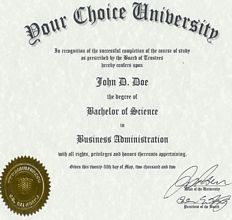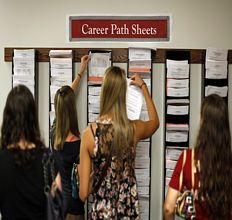Financial Aid Glossary (Q – Z)
When it comes to financial aid and funding your educational dreams, we have what you’re looking for, check out
all of our sources and resources. We cover student loans, student loan debt,
scholarships, grants and other tips to acquire money for college.
NO ADSENSE ACCOUNT SELECTED FOR
GOOGLE ADSENSE
Reaching School
Ever heard the phrase, “You’re reaching aren’t you?” When it comes to
financial aid, the term also has a meaning. A school that the student would love to attend, but which isn't
"guaranteed" to admit you. Every student should apply to at least one reaching school.
Renewable Scholarships
A scholarship that is awarded for more than one year. Generally
speaking, in order to qualify fir this type of scholarship, the student must maintain certain academic standards to
be eligible for subsequent years of the award. Some renewable scholarships will require the student to reapply for
the scholarship each year; others will just require a report on the student's progress.
Repayment Schedule
The repayment schedule discloses the monthly payment, interest rate,
total repayment obligation, payment due dates and the term of the loan.
Repayment Term
The term of a loan is the period during which the borrower is required to
make payments on his or her loans. When the payments are made monthly, the term is usually given as a number of
payments or years.
Research Assistantship (RA)
A form of financial aid awarded to graduate students to help
support their education. Research assistantships usually provide the graduate student with a waiver of all or part
of tuition, plus a small stipend for living expenses. As the name implies, an RA is required to perform research
duties. Sometimes these duties are strongly tied to the student's eventual thesis topic.
Safety School
A school that will almost certainly admit the student. The college admissions
process is not predictable. Even "sure admits" are sometimes rejected. Some students are admitted to all the
schools to which they apply; others are rejected by all the schools. To protect yourself against the latter
scenario, you should apply to at least one safety school.
Sallie Mae
Nicknamed Sallie Mae, the Student Loan Marketing Corp. is a government sponsored
enterprise that purchases student loans from original lenders and repackages them to sell as investment securities.
Shares of Sallie Mae stock are traded on the New York Stock Exchange
Satisfactory Academic Progress (SAP)
A student must make this in order to continue receiving
federal aid. If a student fails to maintain an academic standing consistent with the school's SAP policy, they are
unlikely to meet the school's graduation requirements.
Scholarship
A form of financial aid given to undergraduate students to help pay for their
education. Most scholarships are restricted to paying all or part of tuition expenses, though some scholarships
also cover room and board. Scholarships are a form of gift aid and do not have to be repaid. Many scholarships are
restricted to students in specific courses of study or with academic, athletic or artistic talent. See scholarships.
Scholarship Search Service
A service that charges a fee to compare the student's profile
against a database of scholarship programs. Few students who use a scholarship search service actually win a
scholarship. There are several high quality scholarship search services available on the web for free.
Scholastic Assessment Test (SAT)
One of the two national standardized college entrance
examinations used in the US. The other is the ACT. The SAT (previously known as the Scholastic Aptitude Test) is
administered by the Educational Testing Service (ETS). Most universities require either the ACT or the SAT as part
of an application for admission.
Secondary Market
An organization that buys loans from lenders, thereby providing the lender
with the capital to issue new loans. Selling loans is a common practice among lenders, so the bank you make your
payments to may change during the life of the loan. The terms and conditions of your loan do not change when it is
sold to another holder. Sallie Mae is the nation's largest secondary market and holds approximately one third of
all educational loans.
Secured Loan
A loan backed by collateral. If you fail to repay the loan, the lender may
seize the collateral and sell it to repay the loan. Auto loans and home mortgages are examples of secured loans.
Generally speaking, student loans are not normally secured.
Selective Service
This is the registration for the military draft; which currently is
mandatory. This means that all male students who are US citizens, between the ages of 18 and 25 must be registered
with Selective Service to be eligible for federal financial aid. If the student did not register and is past the
age of doing so (18-25), and the school determines that the failure to register was knowing and willful, the
student is ineligible for all federal student financial aid programs. The school's decision as to whether the
failure to register was willful is not subject to appeal. Students needing help resolving problems concerning their
Selective Service registration should call 1-847-688-6888.
Self Help Aid
Financial aid in the form of loans and student employment. If every financial
aid package is required to include a minimum amount of self-help aid before any gift aid is granted, that level is
known as the self-help level.
Service Academy
The US Air Force Academy, US Coast Guard Academy, US Merchant Marine
Academy, US Military Academy and US Naval Academy. Admissions is highly selective, as students must be nominated by
their Congressional Representative in order to apply.
Servicer
An organization that collects payments on a loan and performs other administrative tasks associated with
maintaining a loan portfolio. Loan servicers disburse loans funds, monitor loans while the borrowers are in school,
collect payments, process deferments and forbearances, respond to borrower inquiries and ensure that the loans are
administered in compliance with federal regulations and guarantee agency requirements.
Simple Interest
Interest that is paid only on the principal balance of the loan and not on
any accrued interest. Most federal student loan programs offer simple interest. Note, however, that capitalizing
the interest on an unsubsidized Stafford loan is a form of compounded interest.
Simplified Needs Test
If the parents have an adjusted gross income of less than $50,000 and
every family member was eligible to file an IRS Form 1040A or 1040EZ (or wasn't required to file a Federal income
tax return), the Federal Methodology ignores assets when computing the EFC. If you filed a 1040 but weren't
required to do so, you may be eligible for the simplified needs test. Details on the eligibility requirements
appear on the Simplified Needs Test Chart. (Please note that starting in 2004, the AGI threshold for IRS Form 1040A
and IRS Form 1040EZ changed from $50,000 to $100,000. Nevertheless, a threshold of $50,000 is still used for the
simplified needs test.)
Stafford Loans
Federal loans that come in two forms, subsidized and unsubsidized. Subsidized
loans are based on need; unsubsidized loans aren't. The federal government pays the interest on the subsidized
Stafford Loan while the student is in school and during the 6-month grace period. The Subsidized Stafford Loan was
formerly known as the Guaranteed Student Loan (GSL). The Unsubsidized Stafford Loan may be used to pay the EFC. See
Stafford Loans.
Undergraduates may borrow up to $23,000 ($2,625 during the freshman year, $3,500 during the sophomore year and
$5,500 during the third, fourth and fifth years) and graduate students up to $65,500 including any undergraduate
Stafford loans ($8,500 per year). These limits are for subsidized and unsubsidized loans combined. The student may
borrow the difference between the subsidized loan amount and the limit as an unsubsidized loan.
Higher unsubsidized Stafford loan limits are available to independent students, dependent students whose parents
were unable to obtain a PLUS Loan and graduate/professional students. Undergraduates may borrow up to $46,000
($6,625 during the freshman year, $7,500 during the sophomore year and $10,500 during each subsequent year) and
graduate students up to $138,500 including any undergraduate Stafford loans ($18,500 per year). These limits are
for subsidized and unsubsidized loans combined. The amounts of any subsidized loans are still subject to the lower
limits.
State Student Incentive Grants (SSIG)
A state-run financial aid program for state residents.
The states receive matching funds from the Federal government to help them fund the program.
Statement of Educational Purpose
A legal document in which the student agrees to use the
financial aid for educational expenses only. The student must sign this document before receiving federal
need-based aid.
Student Accounts Office
See Bursar's Office.
Student Aid Report (SAR)
Report that summarizes the information included in the FAFSA and
must be provided to your school's FAO. The SAR will also indicate the amount of Pell Grant eligibility, if any, and
the Expected Family Contribution (EFC). You should receive a copy of your SAR four to six weeks after you file your
FAFSA. Review your SAR and correct any errors on part 2 of the SAR. Keep a photocopy of the SAR for your records.
To request a duplicate copy of your SAR, call 1-319-337-5665.
Student Contribution
The amount of money the federal government expects the student to
contribute to his or her education and is included as part of the EFC. The SC depends on the student's income and
assets, but can vary from school to school. Usually a student is expected to contribute about 20% of his or her
savings and approximately one-half of his summer earnings above $3,000.
Student Loan Marketing Association (SLMA)
SLMA is the old name for Sallie Mae.
Subsidized Loan
With a subsidized loan, such as the Subsidized Stafford Loan or the Perkins Loan, the government pays the interest on the loan while the student is in
school, during the six-month grace period and during any deferment periods. Subsidized loans are awarded based on
financial need and may not be used to finance the family contribution.
Supplemental Education Opportunity Grant
Federal grant program for undergraduate students
with exceptional need. SEOG grants are awarded by the school's financial aid office, and provide up to $4,000 per
year. To qualify, a student must also be a recipient of a Pell Grant.
Supplemental Loan for Students
This program was terminated in 1994 and literally replaced
with the unsubsidized Stafford Loan program.
Teaching Assistantship (TA)
A form of financial aid awarded to graduate students to help
support their education. Teaching assistantships usually provide the graduate student with a waiver of all or part
of tuition, plus a small stipend for living expenses. As the name implies, a TA is required to perform
teaching-related duties.
Term
The number of years (or months) during which the loan is to be repaid.
Title IV Loans
Title IV of the Higher Education Act of 1965 created several education loan
programs which are collectively referred to as the Federal Family Education Loan Program (FFELP). These loans, also
called Title IV Loans, are the Federal Stafford Loans (Subsidized and Unsubsidized), Federal PLUS Loans and Federal
Consolidation Loans.
Title IV School Code
When you fill out the FAFSA you need to supply the Title IV Code for
each school to which you are applying. This code is a six-character identifier that begins with one of the
following letters: O, G, B, or E. The Financial Aid Information Page provides a searchable database of Title IV
School Codes.
Test Of English As A Foreign Language (TOEFL)
Most colleges and universities require
international students to take the TOEFL as part of their application for admission. The TOEFL evaluates a
student's ability to communicate in and understand English.
Undergraduate Student
A student who is enrolled in a Bachelors program.
Unearned Income
Interest income, dividend income and capital gains.
Unmet Need
In an ideal world, the FAO would be able to provide each student with the full
difference between their ability to pay and the cost of education. Due to budget constraints, the FAO may provide
the student with less than the student's need (as determined by the FAO). This gap is known as the unmet need.
Unsecured Loan
A loan not backed by collateral, representing a greater risk to the lender.
The lender may require a co-signer on the loan to reduce their risk. If you default on the loan, the co-signer will
be held responsible for repayment. Most educational loans are unsecured loans. In the case of federal student
loans, the federal government guarantees repayment of the loans. Other examples of unsecured loans include credit
card charges and personal lines of credit.
Unsubsidized Loan
A loan for which the government does not pay the interest. The borrower is
responsible for the interest on an unsubsidized loan from the date the loan is disbursed, even while the student is
still in school. Students may avoid paying the interest while they are in school by capitalizing the interest,
which increases the loan amount. Unsubsidized loans are not based on financial need and may be used to finance the
family contribution. See Stafford Loans for information about unsubsidized Stafford Loans.
Untaxed Income
Contributions to IRAs, Keoghs, tax-sheltered annuities and 401k plans, as
well as worker's compensation and welfare benefits.
US Department of Education (ED or USED)
Government agency that administers several federal student financial aid programs, including the Federal Pell
Grant, the Federal Work-Study Program, the Federal Perkins Loans, the Federal Stafford Loans and the Federal PLUS
Loans.
US Department of Health and Human Services (HHS)
Government agency that administers several
health education loan programs, including the HEAL, HPSL and NSL loan programs.
Variable Interest
In a variable interest loan, the interest rate changes periodically. For
example, the interest rate might be pegged to the cost of US Treasury Bills (e.g., T-Bill rate plus 3.1%) and be
updated monthly, quarterly, semi-annually or annually.
Verification
Verification is a review process in which the FAO determines the accuracy of
the information provided on the student's financial aid application. During the verification process the student
and parent will be required to submit documentation for the amounts listed (or not listed) on the financial aid
application. Such documentation may include signed copies of the most recent Federal and State income tax returns
for you, your spouse (if any) and your parents, proof of citizenship, proof of registration with Selective Service,
and copies of Social Security benefit statements and W2 and 1099 forms, among other things.
The Federal processor randomly selects financial aid applications for verification, with most schools verifying
at least 1/3 of all applications. If there is an asterisk next to the EFC figure on your Student Aid Report (SAR),
your SAR has been selected for verification. Schools may select additional students for verification if they
suspect fraud. Some schools undergo 100% verification.
If any discrepancies are uncovered during verification, the financial aid office may require additional
information to clear up the discrepancies. Such discrepancies may cause your final financial aid package to be
different from the initial package described on the award letter you received from the school. Be advised; if you
refuse to submit the required documentation, your financial aid package will be cancelled and no aid awarded.
Veteran
For Federal financial aid purposes such as determining dependency status, a veteran
is a former member of the US Armed Forces (Army, Navy, Air Force, Marines or Coast Guard) who served on active duty
and was discharged other than dishonorably (i.e., received an honorable or medical discharge). You are a veteran
even if you serve just one day on active duty - not active duty for training - before receiving your DD-214 and
formal discharge papers. (Note that in order for a veteran to be eligible for VA educational benefits, they must
have served for more than 180 consecutive days on active duty before receiving an honorable discharge. There are
exceptions for participation in Desert Storm/Desert Shield and other military campaigns.) Members of the National
Guard, ROTC students and most reservists are not considered veterans
Since the 1995-96 academic year, a person who was discharged other than dishonorably from one of the military
service academies (the U.S. Military Academy at West Point, the Naval Academy at Annapolis, the Air Force Academy
at Colorado Springs or the Coast Guard Academy at New London) is considered a veteran for financial aid purposes.
Cadets and midshipmen who are still enrolled in one of the military service academies, however, are not considered
veterans. According to the US Department of Education's Action Letter #6 (February 1996), "a student who enrolls in
a service academy, but who withdraws before graduating, is considered a veteran for purposes of determining
dependency status".
Having a DD-214 does not necessarily mean that you are a veteran for financial aid purposes. As noted above, you
must have served on active duty and received an honorable discharge.
W2 Form
The form listing an employee's wages and tax withheld. Employers are required by the
IRS to issue a W2 form for each employee before February 28.
Ward of the Court
A ward of the court is someone under the protection of the courts. The
ward of the court may have a guardian appointed by the court. The legal guardian is not personally liable for the
ward's expenses and is not liable to third parties for the ward's debts. In terms of financial aid purposes, this
subject is too broad for us cover. We advise students impacted by this issue to consult with their (FAA) Financial
Aid Administrator, also known as the Financial Aid Officer at the school they are enrolled in or plan on
attending.
Work Study
See Federal Work-Study.
Brad Matheson is a professional Financial Consultant who specializes in helping businesses and individuals
resolve their debt issues. He believes that all debt problems can be solved with the right debt advice and aspires
to help Americans learn all of their debt options and exercise all of their rights. Says, Matheson, “Don't allow
the Student Loan Debt crisis or a Defaulted Student Loan to hinder or block
your career aspirations or stymie your financial dreams, There is Student Loan
Help available!”
Source: http://studentloanwhiz.com/
| 










